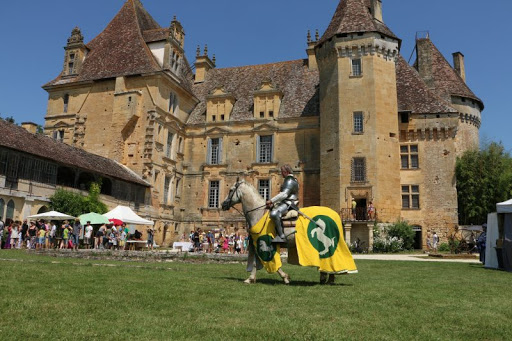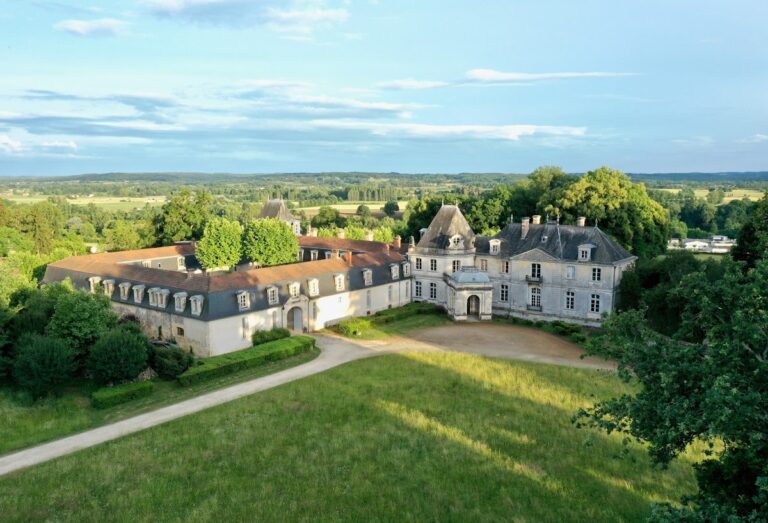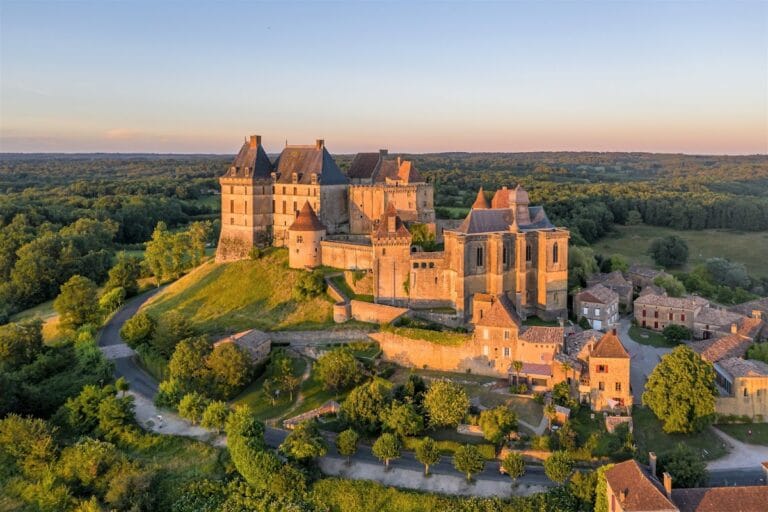Château de Bayac: A Medieval Castle in Bayac, France
Visitor Information
Google Rating: 4.8
Popularity: Very Low
Google Maps: View on Google Maps
Country: France
Civilization: Unclassified
Remains: Military
History
The Château de Bayac stands in the commune of Bayac, France, and was constructed during the 14th century by the medieval French civilization. From its earliest days, the castle was part of a larger administrative domain known as a châtellenie, which was held by the archbishops of Bordeaux, linking the site to ecclesiastical authority.
Throughout the late Middle Ages and early modern period, the castle passed into the hands of several noble families. Among them was the house of Grailly, followed by the lords of Serval from the nearby Château de Couze. By the 16th century, the Bosredon family from the Auvergne region had acquired ownership. The Bosredons became notably involved in the French Wars of Religion, a series of conflicts between Catholics and Protestants that deeply affected the region.
The castle endured devastating events during these religious wars. On 27 January 1580, it was seized unexpectedly by the Protestant captain Chaus de Monsac. During this surprise attack, Pierre de Bosredon, then the castle’s owner, was killed. The fortress was subsequently looted, and nearby Couze was strengthened as a defensive position. These occurrences left marks on the castle’s history and structure.
In 1635, the Losse family established a branch at Bayac through matrimonial ties with the Bosredons. Members of this family continued to reside at the château until the French Revolution. Among them, the colonel de Losse served multiple terms as mayor of Bayac and notably took a public oath of loyalty to the Republic in 1795, reflecting the shifting political landscape of the time.
During the 20th century, around 1925, the castle belonged to Gaboriot, a Paris-based newspaper director with notable political connections. He welcomed various prominent leaders of the Third and Fourth French Republics, such as Prime Ministers Édouard Daladier, Paul Painlevé, and Paul Reynaud. Towards the end of World War II, General Maurice Gamelin sought refuge at Château de Bayac but was subsequently arrested within its walls.
After the conclusion of the war and following Gaboriot’s death, the château changed owners multiple times until 1957 when it was purchased by the city of Paris. The new owners repurposed the site as a holiday camp, managed by the National Association for Recreational Holiday Centers (AGOSPAP). Recognizing its historical value, the castle’s facades, roofs, and circular tower were formally designated as historic monuments on 5 November 1970.
In July 1998, a local group of children performed a sound and light show on the castle grounds that narrated the site’s history. By late 2010, the château was placed on the market once again, marking another transition in its long and varied story.
Remains
The Château de Bayac is positioned mid-slope on the left bank of the Couze River, to the east of the village center, where it commands a strategic view of the surrounding valley. The complex reflects layers of construction from the 14th century onward, exhibiting features typical of medieval fortifications alongside later additions that softened its defensive character.
Today, two towers dating from the 14th century have survived. One presents crenellations, the notched battlements common to defensive walls, and approximates the form of a keep or donjon, the central stronghold of a castle. This tower houses the so-called “Queen’s chamber,” a room traditionally linked to Eleanor of Aquitaine by local tradition, accessible via a grand stone spiral staircase. The staircase is monumental in scale and construction, emphasizing the importance of this chamber within the castle.
Another tower is distinguished by machicolations—openings between the supporting corbels of a battlement through which defenders could drop projectiles or boiling substances—an architectural detail underscoring its military purpose. This tower is accompanied by a small turret known as an échauguette, which is roofed and integrated seamlessly into the tower’s masonry, serving as a watch post or lookout.
During the 16th century, a circular tower was added, reflecting changes in defensive architecture and residential needs. This structure is still intact and forms one of the key historic elements preserved today. Later, in the 18th and 19th centuries, the principal residential building was constructed. Its design altered the original fortress’ austere military appearance, introducing domestic architectural features suited to more peaceful times.
The parts of the castle now protected as historic monuments include the facades, roofing structures, and the 16th-century circular tower. These elements offer a tangible connection to various stages of the castle’s development, showcasing medieval military design alongside post-medieval adaptations.
Oral tradition and historical commentary emphasize the association of the “Queen’s chamber” with Eleanor of Aquitaine, although this remains a symbolic link rather than a documented residency. The staircases, towers, and masonry remain largely preserved in situ, allowing for an appreciation of the castle’s construction methods and evolution over centuries.







